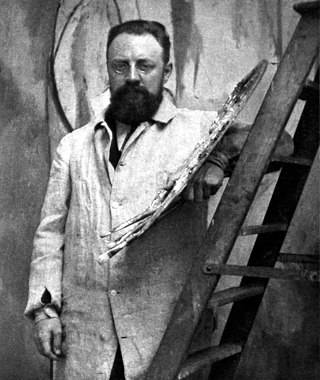
Henri Émile Benoît Matisse was a French visual artist, known for both his use of colour and his fluid and original draughtsmanship. He was a draughtsman, printmaker, and sculptor, but is known primarily as a painter. Matisse is commonly regarded, along with Pablo Picasso, as one of the artists who best helped to define the revolutionary developments in the visual arts throughout the opening decades of the twentieth century, responsible for significant developments in painting and sculpture.

TheBarnes Foundation is an art collection and educational institution promoting the appreciation of art and horticulture. Originally in Merion, the art collection moved in 2012 to a new building on Benjamin Franklin Parkway in Philadelphia, Pennsylvania. The arboretum of the Barnes Foundation remains in Merion, where it has been proposed that it be maintained under a long-term educational affiliation agreement with Saint Joseph's University.

The Blue Nudes is a series of collages, and related color lithographs, by Henri Matisse, made from paper cut-outs depicting nude figures in various positions. Restricted by his physical condition after his surgery for stomach cancer, Matisse began creating art by cutting and painting sheets of paper by hand; these Matisse viewed as independent artworks in their own right. The Blue Nudes refers also to the editioned multiples based on the cut-outs. Matisse supervised the creation of these lithographs until his death in 1954.
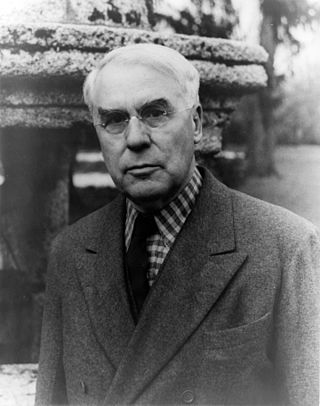
Albert Coombs Barnes was an American chemist, businessman, art collector, writer, and educator, and the founder of the Barnes Foundation in Philadelphia, Pennsylvania.
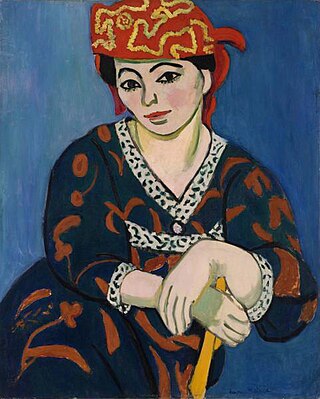
Madras Rouge is a painting by Henri Matisse from 1907. The woman depicted is the painter's wife, Amélie Noellie Parayre Matisse. It is held in the Barnes Foundation, in Philadelphia.

Le bonheur de vivre is a painting by Henri Matisse. Along with Picasso's Les Demoiselles d'Avignon, Le bonheur de vivre is regarded as one of the pillars of early modernism. The monumental canvas was first exhibited at the Salon des Indépendants of 1906, where its cadmium colors and spatial distortions caused a public expression of protest and outrage.
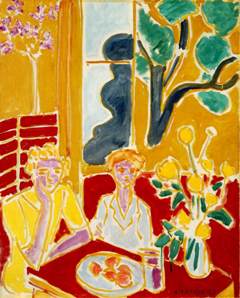
Deux fillettes, fond jaune et rouge (1947), oil on canvas, 61 x 49.8 cm is a painting by Henri Matisse in the collection of the Barnes Foundation, Merion, Pennsylvania.

Woman Reading is an oil-on-board painting executed in 1895 by the French artist Henri Matisse. It is displayed at the Musée Matisse, in Le Cateau-Cambrésis, having been on loan from the Centre Pompidou since 2002. It shows a woman, dressed in black, seated and reading, with her back to the viewer, in the calmness of a somewhat cluttered room. Matisse incorporated a self-portrait into the painting in the form of a framed drawing hanging on the wall at the upper left.
Pierre Matisse was a French-American art dealer active in New York City. He was the youngest child of French painter Henri Matisse.

The Matisse Museum is a museum in Le Cateau-Cambrésis, France that primarily displays paintings by Henri Matisse. The museum was established by Matisse himself on 8 November 1952; he also defined the way his works should be arranged. At that time the museum was located in the wedding room of the Le Cateau City Hall.
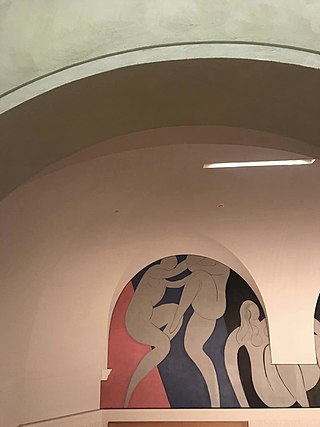
The Dance by Henri Matisse is a triptych mural in the Barnes Foundation. It was created in 1932 at the request of Albert C. Barnes after he met Matisse in the United States. Barnes was an art enthusiast and long-time collector of Matisse's works, and agreed to pay Matisse a total of $30,000 for the mural, which was expected to take a year.
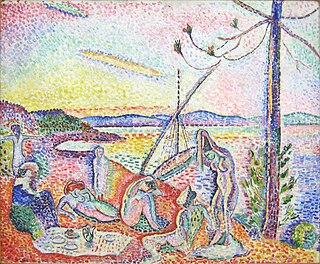
Luxe, Calme et Volupté is a 1904 oil painting by the French artist Henri Matisse. Both foundational in the oeuvre of Matisse and a pivotal work in the history of art, Luxe, Calme et Volupté is considered the starting point of Fauvism. This painting is a dynamic and vibrant work created early on in his career as a painter. It displays an evolution of the Neo-Impressionist style mixed with a new conceptual meaning based in fantasy and leisure that had not been seen in works before.

Fauvism is a style of painting and an art movement that emerged in France at the beginning of the 20th century. It was the style of les Fauves, a group of modern artists whose works emphasized painterly qualities and strong colour over the representational or realistic values retained by Impressionism. While Fauvism as a style began around 1904 and continued beyond 1910, the movement as such lasted only a few years, 1905–1908, and had three exhibitions. The leaders of the movement were André Derain and Henri Matisse.
The Music Lesson is a 1917 oil painting by Henri Matisse. It is on display at the Barnes Foundation in Philadelphia, Pennsylvania.

The Back Series is a series of four bas-relief sculptures, by Henri Matisse. They are Matisse's largest and most monumental sculptures. The plaster originals are housed in the Musée Matisse in Le Cateau-Cambrésis, France.

Colored Landscape with Aquatic Birds is an oil painting created circa 1907 by the French artist and theorist Jean Metzinger. Paysage coloré aux oiseaux aquatiques is a Proto-Cubist work executed in a Post-Divisionist style with a unique Fauve-like palette. Metzinger's broad omnidirectional brushstrokes in the treatment of surfaces render homage to Paul Cézanne, while the luscious subtropical imagery in the painting are an homage to Paul Gauguin and Metzinger's friend Henri Rousseau.
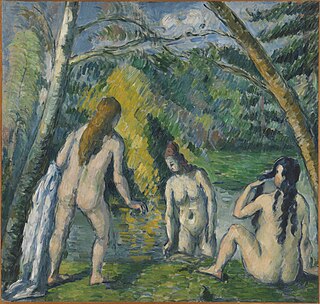
Three Bathers is an 1879-1882 oil-on-canvas painting by Paul Cézanne, which is housed in the Petit Palais in Paris. It shows three bathing female nudes framed in an arch formed by two trees. Executed in a typically Impressionist style with short heavy brushstrokes and strong colours, the painting displays notable pictorial composition and form.

After the Bath is a painting from 1910 by the French painter Pierre-Auguste Renoir representing his late work period (1892–1919). The painting is now in the Barnes Foundation in Philadelphia.

French visual artist Henri Matisse was known for his use of color and draughtsmanship. In the early 20th century, Matisse became a leader of the Fauvism art movement, which was an early movement in the broader Post-impressionist era.
















